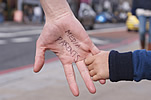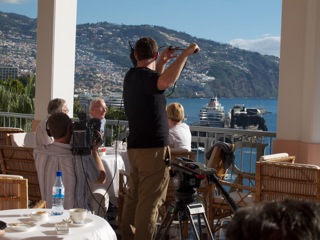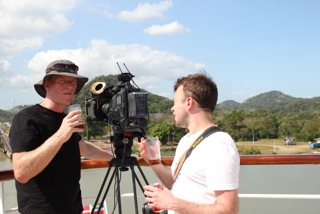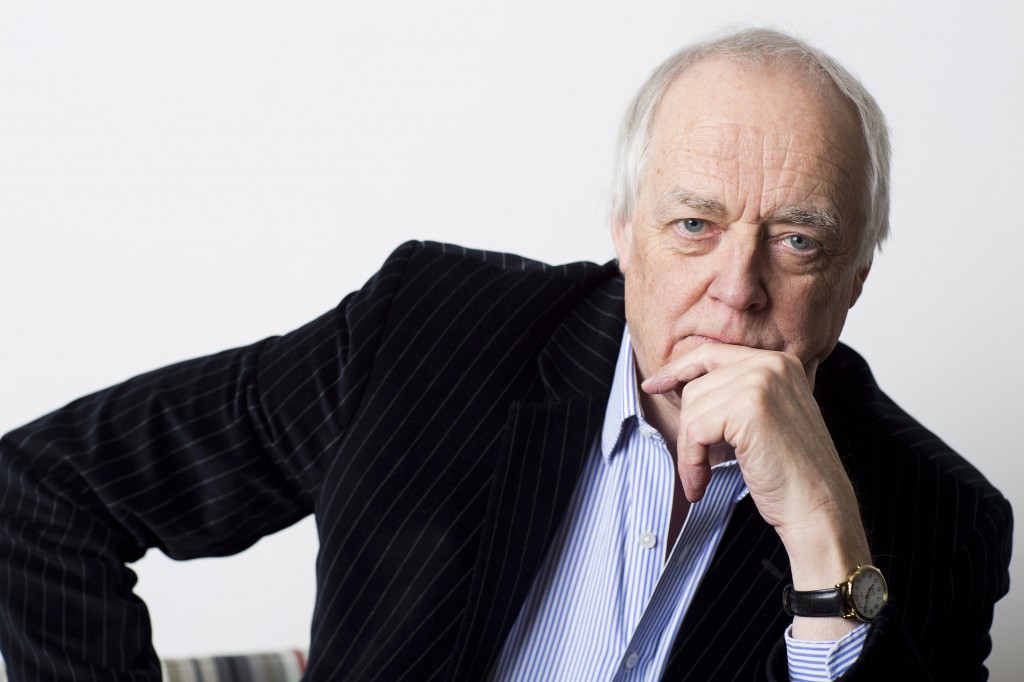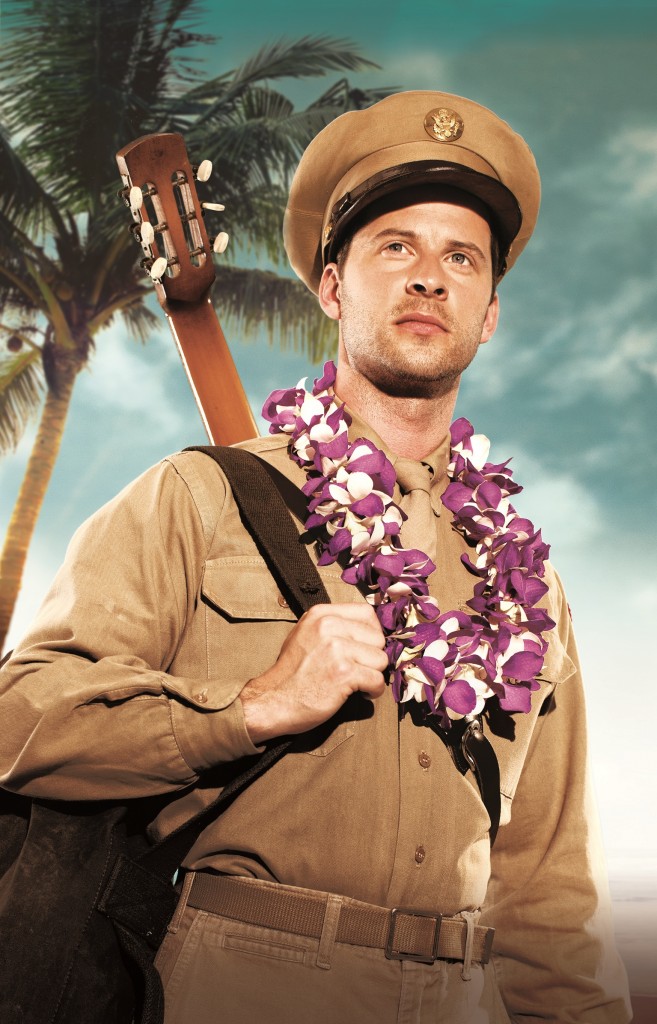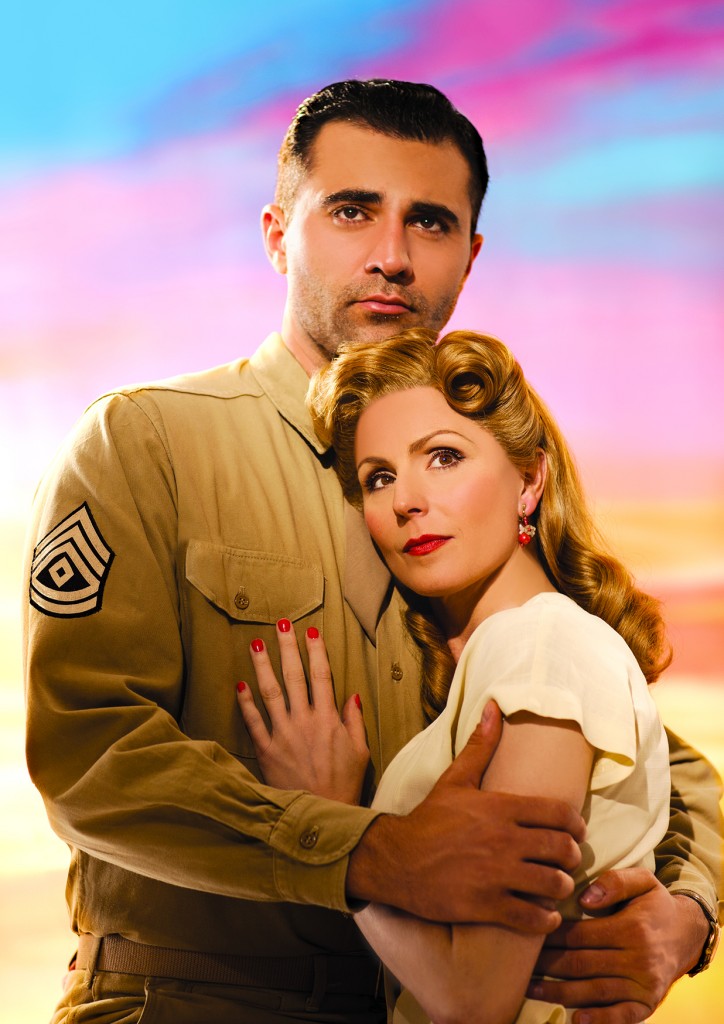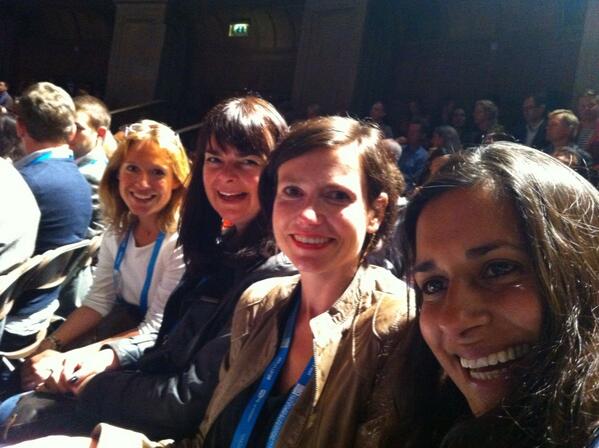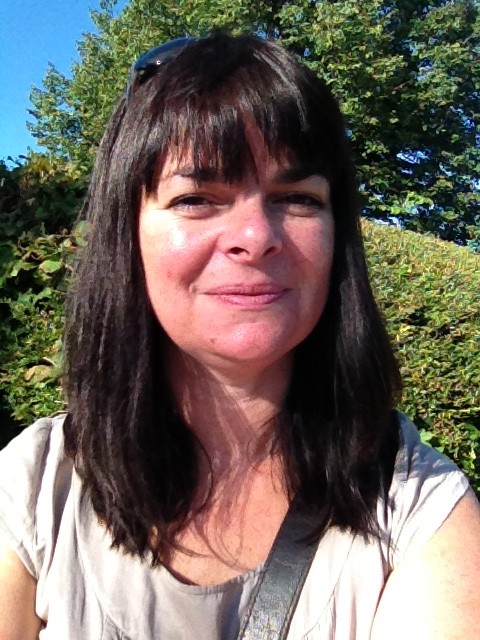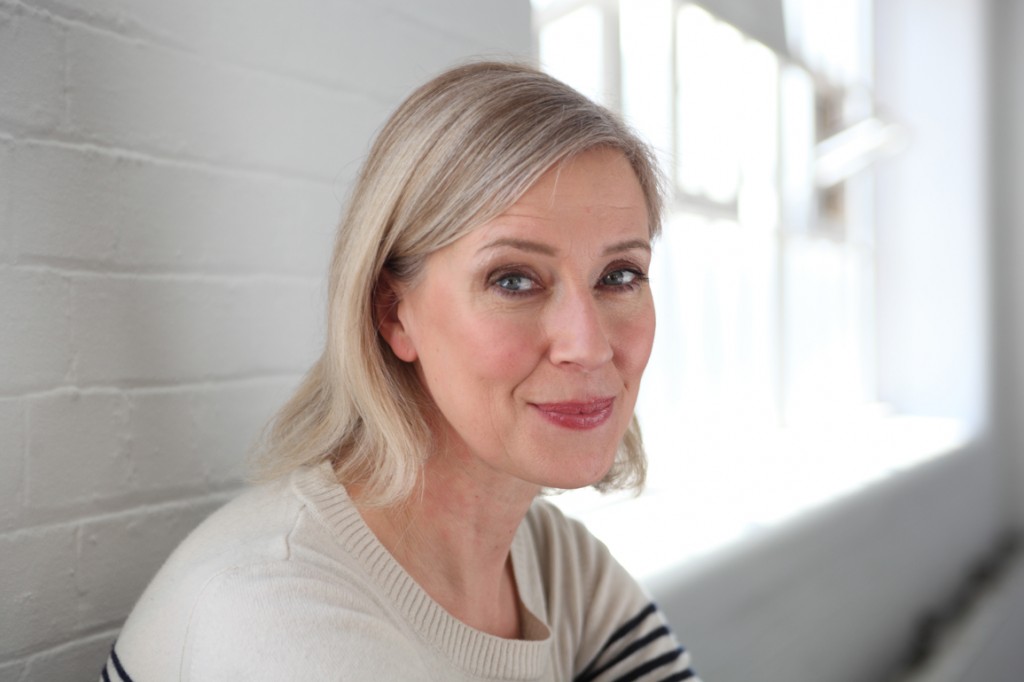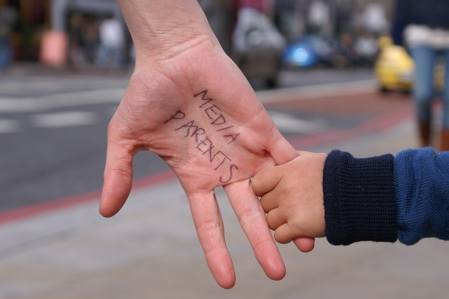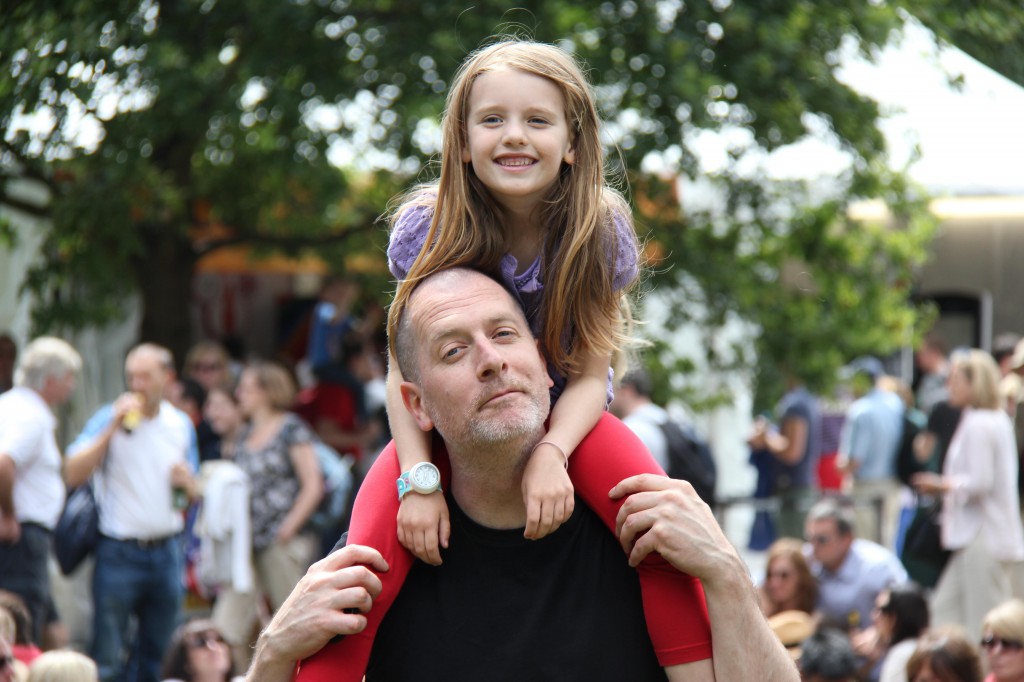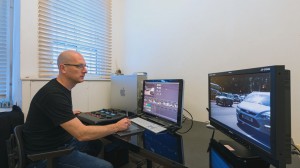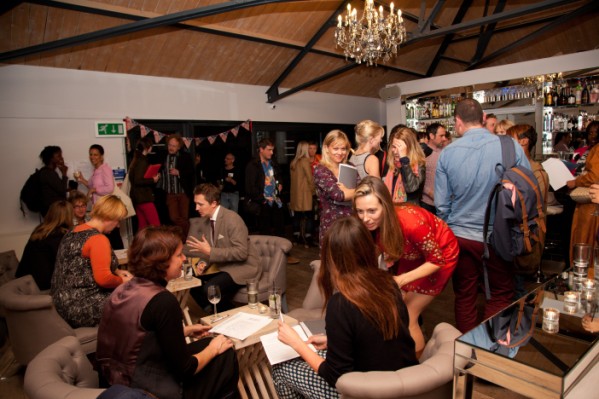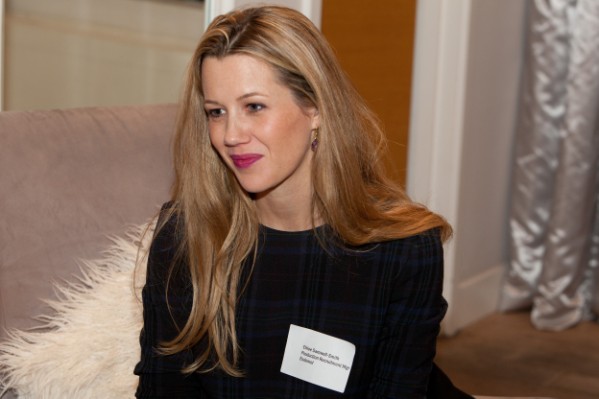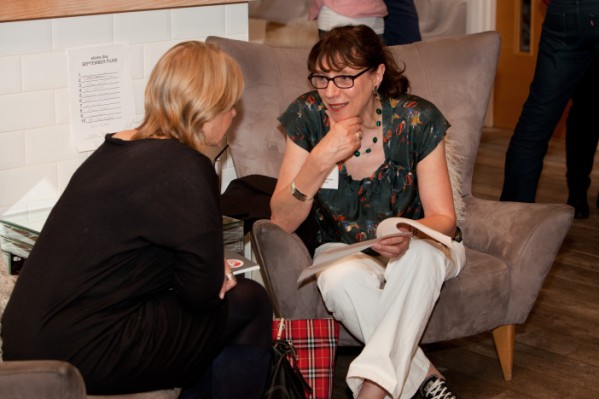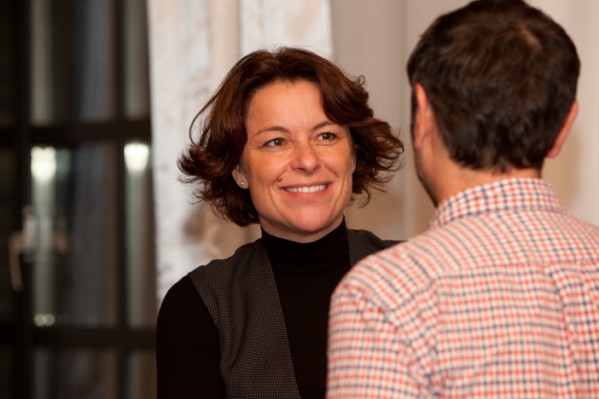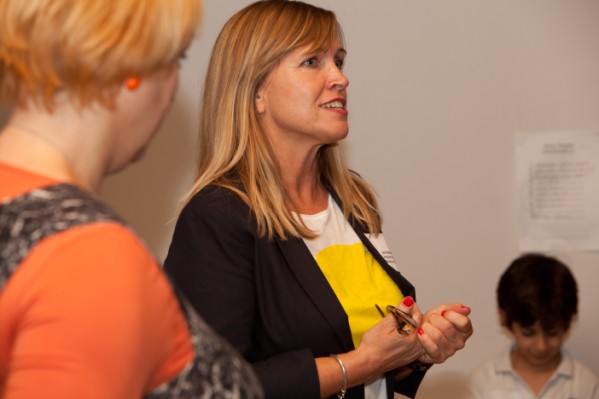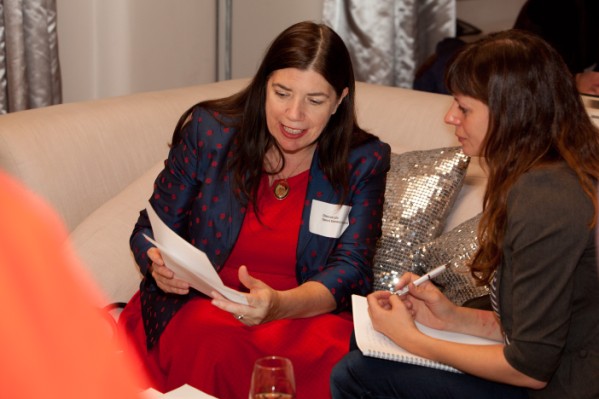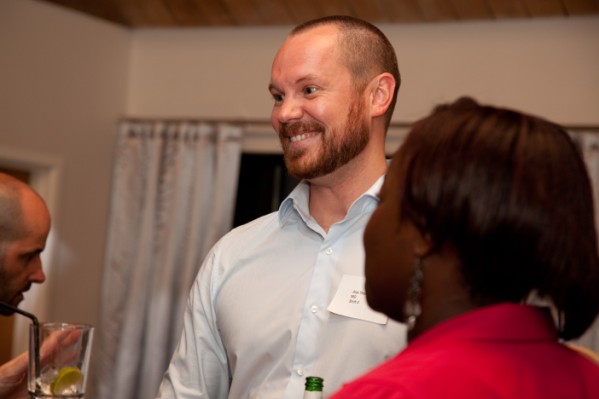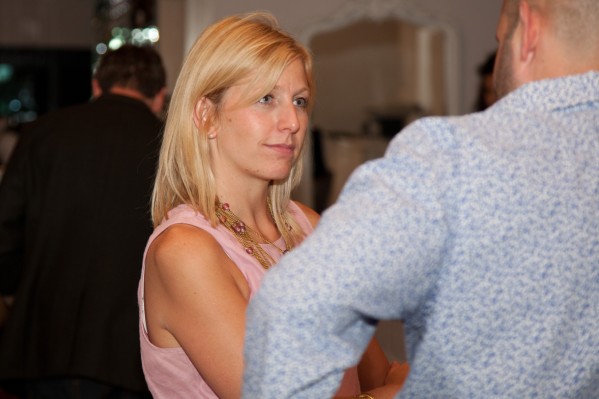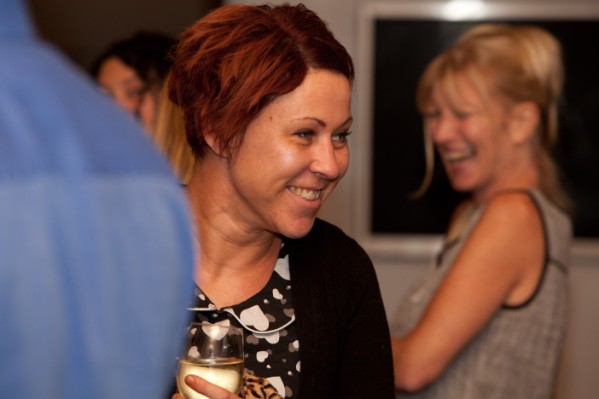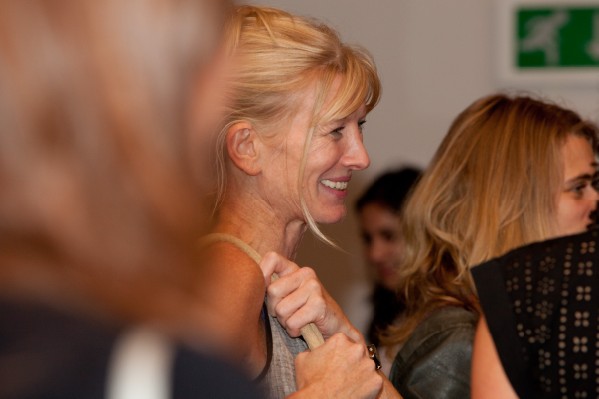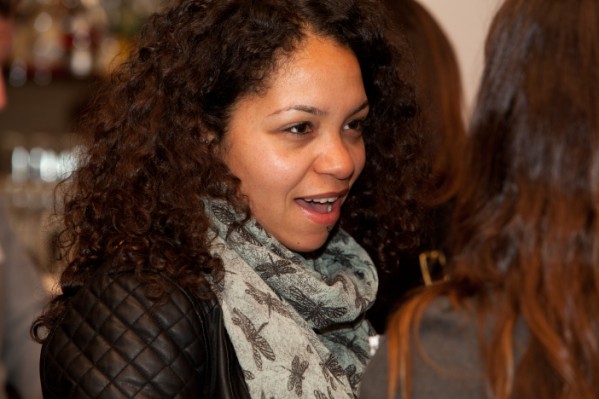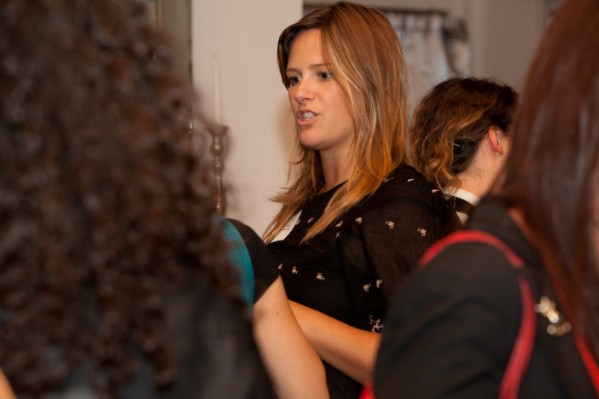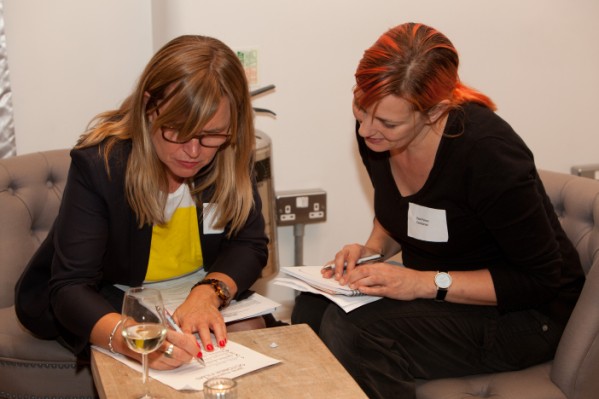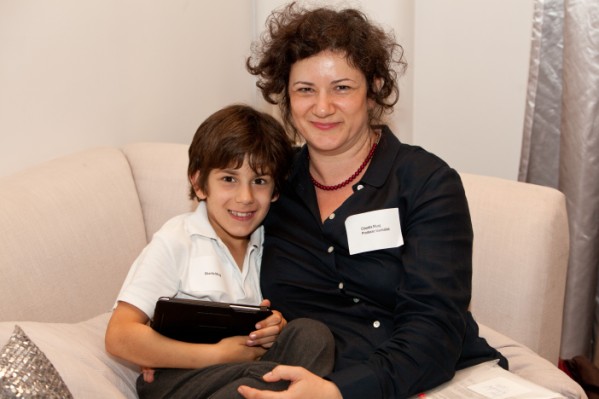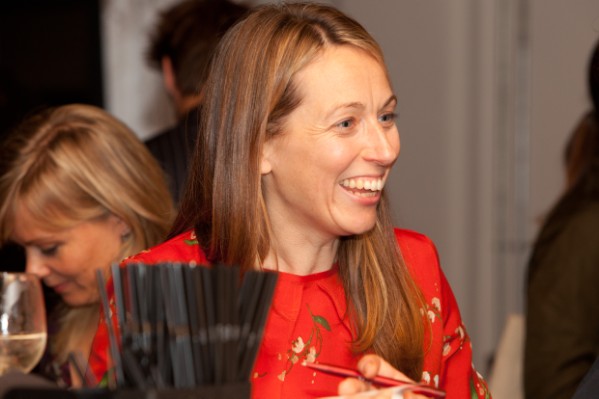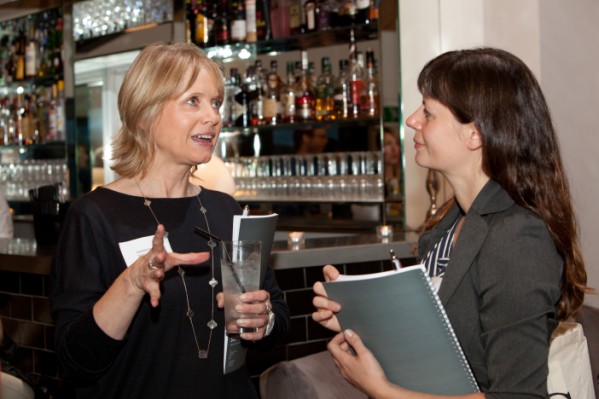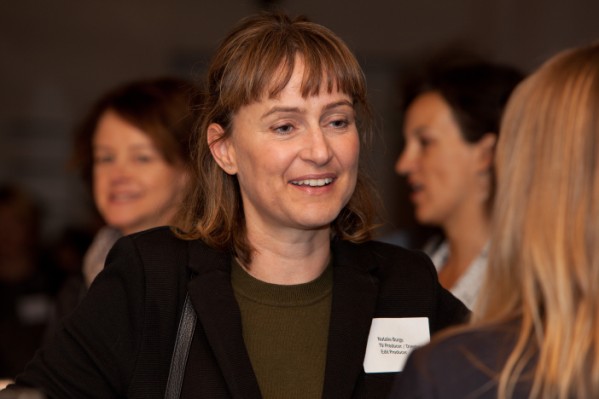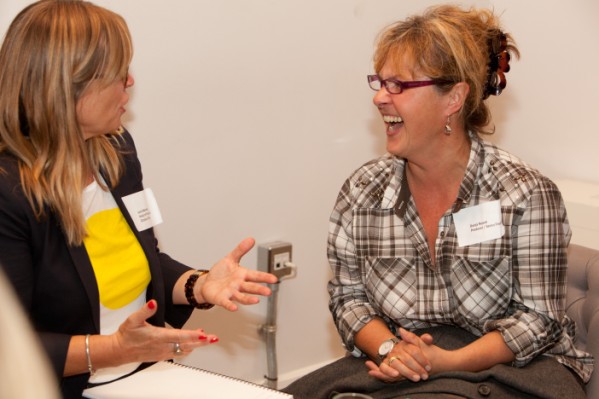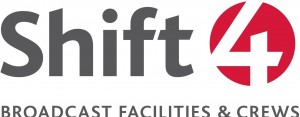5 minutes with… Jules Seymour, Series Producer (at sea!)
The Cruise: A life at Sea
It seemed like the ideal job, following a Chaplain on a luxury cruise around the world for four months, writes Jules Seymour.
But all we were sure about when I was hired was that the Vicar the Reverend Colin Still was happy for us to follow him and that we had permission from the Cruise Company to film in the public areas of the ship. In the period leading up to departure on the 5th January we were able to talk to half a dozen passengers who were coming on board, and film our Vicar doing a Christmas service on his home ground in Brighton, and a master interview with him about Cruise trips in general which was to prove very useful later on.
The remit for this in-house BBC Religion and Ethics production was to produce a gentle observational series about the work of the ships chaplain, and feature characters and the community of passengers and crew on board during the voyage. Colin had agreed to be followed and filmed on board because of his links with the Mission to Seafarers, a Charity that seeks to help people who work on ships around the world. The other good news was that Julian Mercer an experienced BBC Bristol Producer was brought on to the project. His experience and negotiating skills would prove invaluable to the success of the series.
The big task before departure at the beginning of January was to choose the team that would be with me on board. With a limited budget, and complications about hopping on and off the ship, we soon found out that we weren’t going to be able to get the team off the ship for breaks or holidays, it was going to have to be all or nothing.
We needed a small team that were multi-skilled and could get the job done, but equally importantly would get on with each other and the passengers and the Crew on board, and be able to live four months away from loved ones and life
at home. After an exhaustive interview process we arrived at a team of four including myself. Assistant Producer Mike Arnott would be my right hand man, I knew him and had worked with him before. He’s a great shooter, good with people and has a nose for gently getting a good story from the demographic we were looking at filming, importantly he also could cut on final cut pro. Laura Jane Stacey was on board because of her experience working at the BBC, her confident and pleasant nature, and having some experience of self-shooting. Stuart Burnell came through the department and was going to be in charge of the technical side of the operation the downloading and logging of rushes, in effect our media manager, but he would have to do much more than that over the coming voyage.
With Executive Producer Julian Mercer and in-house Production Manager Melissa Quero we arrived at a schedule and a plan to shoot and edit the series in the time we had at our disposal. We elected to take two cameras, the main camera would be a Sony PMW 500, with a Cannon 305 as back up and second camera. Because we had so much time at sea our edit time back in England was constrained by delivery dates and budgets, so we planned to rough assemble as much as we could on the voyage. Mike would do the cutting. I was to fly back from Dubai three weeks before the end of the Cruise, as the edit would have to start then if we were to hit our delivery dates, which would mean that Mike would have to direct and shoot the last leg, it seemed a big ask even then.
This plan hinged on us being able to send cuts back to Julian in England from wherever we were at sea and necessitated us getting our own chunk of the bandwidth on board, and being able to plug directly into the ships server. This was successfully negotiated by our IT Manager Ian Wagdin. It was one of the most expensive hits on our budget but was to prove to one of the most precious resources, as well as getting cuts of our material to our executive it enabled us to talk to our loved ones and families from most places around the world.

Series Producer Jules Seymour preps The Cruise: A Life at Sea for BBC2. http://www.mediaparents.co.uk/freelancers/126/jules-seymour
With everything in place we hit the ground running from the off. We knew we were going to need leaving shots and blanket coverage of the first few days of the trip so we started in relentless shooting mode. Our central character was Colin and through him we needed to capture a sense of the start of the trip and his thoughts about the momentous cruise we were going in.
And who were our other characters? From the half dozen couples we’d managed to get to talk to before we left we knew we had good stories to tell but there were 1700 passengers and Crew on board so there were lots of other stories out there.
I decided to keep the central focus on the Vicar and his world to start with, he’d been on many cruises so he could commentate on these early stages of the cruise, whilst we worked out which stories we were to follow. What had become obvious fairly early on was that the series would have a linear nature to it, thoughts and recollections may be able to move around in the timeline but the Geography of where we were going and events on board wouldn’t. Our principle focus to start with was with the passengers. With many days at sea guaranteed with crossings of the Atlantic and Pacific, our focus immediately turned to the on board activities that they took part in. The Choir Mistress was a strong and committed character teaching on her first cruise, with an ailing mother back at home to worry about and an inspirational personality and a pride in her work it seemed a good idea to follow the choirs progress over the first leg.
Chaplain Colin was in effect the on-board councilor and someone who would listen to issues and worries raised by the passengers on board. Bob and Vivian our “love birds” were on a honeymoon cruise after recently getting married. As well as their joy in finding love in their lives, Vivian was desperately worried about Bob’s diabetes and his weight, which she conveyed to Colin. We followed his battle to lose weight till they got off in Acapulco. Added to our developing storylines we also had events to film, a helicopter airlift of a very ill passenger in mid-Atlantic, visits to Madeira and Caribbean islands, a transit of the Panama Canal and the end of leg arrival in Acapulco.
With the two week crossing of the Pacific we started editing. We still had our long running stories to follow, but we made time to begin putting assemblies together. To start with we cut taster sequences of our main characters and story lines and fdp’d them to Julian back in England. After getting agreement with Julian about the characters and story lines we started to cut rough assemblies for what could be the first two episodes. As the journey went on the filming followed these patterns, filming narrative long running stories and events as they happened. Our access to film on board had initially been just on the passenger decks, and throughout the trip I had to carefully negotiate with the PR reps on board to extend this access so that we could include more of the crew stories and activity around the rest of the ship. We also had to show a positive and undisruptive front to the passengers and crew on board in general.
Technically our biggest problem was sound collection. Our radio mics continually picked up a low frequency buzz, whichever frequency we tried. Our best solution was to film with a 416 gun mic as the master channel and the radios as a back up, producing better results although this altered to some extent how we shot material. In the end our sound worked out fine with some careful tweaking of the trickiest bits in the dub.
The team worked diligently and tirelessly throughout the trip. After three months we reached Dubai and I flew back to start the edit. Because of our delivery dates and viewing schedule I had to hit the ground running with the editor, we were going to be busy. Back on board the crew headed by AP Mike Arnott were shooting material for the final episode. We had discussed the stories we wanted to follow in some detail before I left, but I was always available to talk with Mike about progress and changes of plan back in England.
At the edit back in Shepherds Bush it was apparent that we were up against it. However we had rough cuts for two episodes and an assembly for a third, but most importantly we were lucky to have the services of an excellent Bristol based editor Ben King, whom Julian had persuaded to come down to London for the edit. As well as being brilliant with technology and very fast, Ben has a great editorial mind and a fantastic music library and knowledge to draw on.
Back on board the Balmoral the scaled down crew had done brilliantly in keeping up the relentless shooting schedule. They had managed to film all the stories we’d hoped for which would give us plenty of material for our last episode. I was there to film from the shore as the Cruise came back, although the 112 day world trip was over, there was still going to be the best part of three months editing ahead of us.
Although it never stopped being very hard work, long days and some weekend work, it was usually fun. After a suggestion from Julian it was decided that I would do the voice over narration, a daunting prospect but after three months training I warmed to the task. My highly paid career as a voice over artist on lucrative commercial gigs hasn’t happened yet, but it’s surely just a matter of time!
The Series went out at the end of July for six weeks and peaked at over 2 million with a 1.6 final average for the whole series, which the BBC seemed very pleased with.
Would I do it or something like it again? Maybe but the family might have to come too!
Series Producer Jules Seymour is in the TALENT section of Media Parents http://www.mediaparents.co.uk/freelancers/126/jules-seymour
